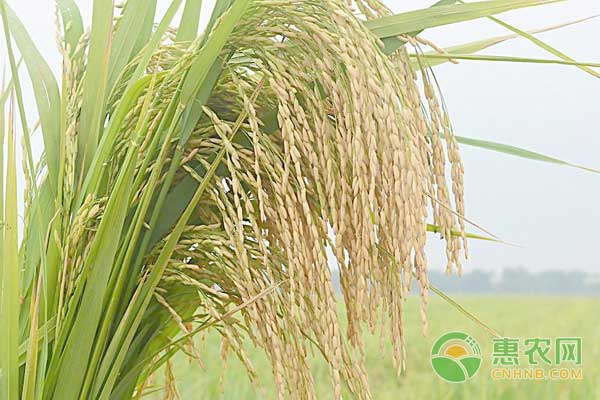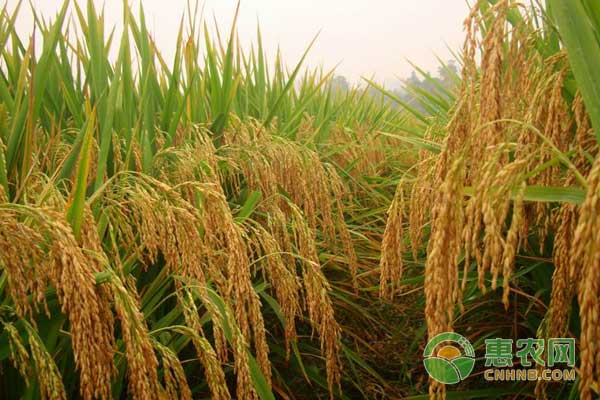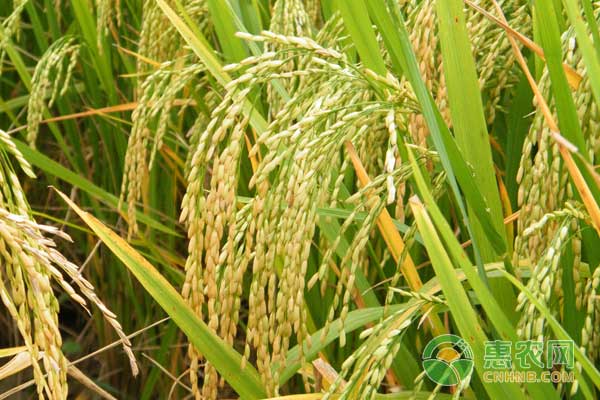High-yield and high-efficiency cultivation techniques for green high quality rice in Jiangxi
Rice is one of the main food crops in Jiangxi Province. In order to produce green and high-quality rice, promote the development of local grain industry, and improve farmers' planting efficiency, this technical specification is specially formulated for the reference of rice farmers. High-yield and high-efficiency cultivation techniques for green high-quality rice ensure safe and high quality of the production area by selecting suitable planting bases and high-quality rice varieties; reduce the amount of chemical fertilizers and pesticides through fitness cultivation, organic substitution of fertilizers, optimization of efficient fertilization and green plant protection, and ensure rice safety and quality. Prevent rice pollution and ensure environmental safety through safe harvesting, storage and utilization of by-products. Suitable area The province's production environment meets the requirements of NY/T391-2000, and it is suitable for large-scale promotion in areas driven by large-scale processing enterprises. Benefit goal 1. Yield and profit target: 400-450 kilograms per mu in early and late rice, 450-500 kilograms per mu in a season, more than 100 yuan in early rice and more than 300 yuan in comprehensive benefits. 2. Rice quality target: Early rice A grade green rice, medium and late rice quality national standard level three or above, quality taste meets market demand, which is conducive to achieving high quality and good price. 3. Targets for chemical fertilizers and pesticides reduction: 50% reduction in chemical nitrogen fertilizer use and 20% reduction in chemical pesticide use. Technical points 1, base selection The base should be kept away from pollution sources, the ecological conditions are good, the biodiversity is kept well, and the soil, water and atmospheric environment of the production area meet the requirements of NY/T391-2000. At the same time, we should try to choose areas with independent ecological small watersheds and good isolation conditions. The paddy field should be relatively flat, convenient for irrigation and drainage, less susceptible to flood and drought, less soil-borne diseases and malignant weeds, and relatively concentrated. 2, variety selection The varieties that have passed the examination or introduction and record, and have excellent rice quality, good yield and stability, suitable growth period, and strong resistance to pests and diseases should be selected, and the varieties should be changed regularly (round). For early rice, you can use conventional rice cultivar Xiangzao No. 45, hybrid rice cultivar Liangyou 722, and Zhuliangyou 171; for one season rice, you can use conventional rice, nine fragrant sticky, outer ginseng No. 7, Xing'an Xiangzhan, and evening 籼 30 (923). In the evening, 籼40, etc., hybrid rice Longliang 534, Jingliangyou 534, etc.; late rice can be used for conventional rice Meixiang new occupation, hybrid rice Wanxiang Youhuazhan, Taiyou 398, Yexiangyou 2, Taiyou 871 and so on. 3, planting mode Promote the adoption of ecological planting models, such as rice-duck (fishing, frog) co-cultivation, animal-marsh-rice and other ecological breeding modes, and vigorously promote fertilizer (canola, Chinese milk vetch, potato) - rice - rice, fertilizer (rape, Acacia, potato) - a planting system that combines land and land with rice to increase the source of organic fertilizer and improve the quality of cultivated land. Cultivate strong Improve the quality of rice seedlings by cultivating strong seedlings. To cultivate strong and strong, we must emphasize the following points: (1) Soaking seeds for disinfection. Seeding for 1-2 days before sowing. After the water is selected, the seeds are sterilized by soaking with prochloraz, allicin or 1% lime water. (2) requires thin sowing. General acre field of hybrid rice seed quantity is: 1.75-2.0 kg of rice, 1.25-1.5 kg of rice, season rice 0.75 to 1.0 kg; mu conventional rice seed amount: 4.0-5.0 kg of rice, rice 3.0-4.0 kg, 2.0 to 3.0 kg of rice season; seedlings moist by an ample supply of seedlings present seedling 1:10, plastic plate 561 as rice seedling tray per acre holes 45-50 plastic sheet, plastic plate aperture 434 rice is 65-70 mu sheet, cropping rice hole 434 50-60 mu plastic disc sheet; seeding machine according to the present plug seedling seedling ratio of 1:80 ample supply. (3) Shizujifei and timely fertilizer. Usually applied per acre foot seedling decomposition of the manure, or manure 1000-1500 kg 1000 kg as basal fertilizer and applied NPK (15-15-15) 30 kg; topdressing urea and potassium chloride at 1 heart 2 leaves Each 3-5 kg ​​is used as a weaning fertilizer, and 3-5 kg ​​of urea and potassium chloride are applied for feeding 3-5 kg ​​before transplanting. (4) Strengthen the prevention and control of pests such as pests and diseases in Putian. We should adhere to the principle of prevention, comprehensive application of the principles of green prevention and control technologies such as agricultural control, biological control, physical and chemical control, and the use of pesticides in the national regulations and green food pesticides (NY/T393-2013). Chemical pesticides. 4, reasonable close planting According to different breeding methods, suitable age (shifting) planting, appropriate increase in density, generally early rice inserted 2.2-2.5 million per acre, hybrid rice per grain 2 seedlings, conventional rice 4-5 grain seedlings; 16,000 baht, 1 grain seedling per hybrid rice, 2-3 grain seedlings per rice in conventional rice; 1.8-2.2 million glutinous rice in late rice, 1-2 grain seedlings per hybrid rice, 3-4 in regular rice Grain seedlings. Where there are conditions, transplanting or machine insertion is carried out by wide-row narrow plants, and the work is carried out every 3 meters. 5. Optimize fertilization Adhere to the principle of fertilization supplemented by organic fertilizer, supplemented by chemical fertilizer and nitrogen reduction, phosphorus and potassium fixation. Organic nitrogen accounts for more than 50% of total nitrogen application. Organic fertilizer can be used for green manure, straw returning, biogas fertilizer, cake fertilizer, livestock and poultry. manure and organic fertilizer and other commodities; based on soil testing and fertilizer recommendations card, so that precise fertilizer, organic fertilizer and phosphate fertilizer as basal generally all basal fertilizer, chemical nitrogen and potash, tillering, grain ratio fertilizer, rice 6: 2: 2 In the middle and late rice, 5:2:3 and pay attention to the application of micro-fertilizer. Fertilizers should comply with the provisions of NY/T394-2000. It is forbidden to use chemical fertilizers and biological fertilizers and organic fertilizers and mineral fertilizers that are not registered with national or provincial agricultural departments. 6. Scientific irrigation (1) Water control irrigation. Generally, the depth of each irrigation is about 2 cm, and the rice field exposure time should be increased as much as possible. (2) several times early sun light. When the field reached the planned number of seedlings spike of about 80% beginning Shaitian sun to Tanabe microcracks, Tanaka irrigation water is not trapped thin feet wet, do not keep the crack widened, the soil is not softened, many times the sun light, down to 2 leaf emergence stage rehydration child support. (3) deep-water thermostat. Rice Grain Filling in case of adverse weather conditions (such as high temperature or in case of early rice rice under low temperature) can be fed more than 10 cm deep water thermostat. (4) Never cut off water too early. Generally, the early rice was cut off 5 days before the harvest and 7 days before the harvest of the medium and late rice. 7. Pest and disease prevention and control Priority is given to green prevention and control measures for pests and diseases such as agricultural prevention and control, biological control, physical and chemical control and control. The use of chemical pesticides should strictly comply with NY/T393 regulations, strictly control the use of chemical pesticides and safety intervals, and pay attention to rational mixing, rotation, and alternate use of drugs to overcome or delay the emergence and development of pest and disease resistance. The chemical drug should be used as follows: the standard of the drug, the choice of the pesticide type, the standard of the drug use, the standard of drug use, and the prescription method of the "five quasi-precision" drug use requirements. The specific prevention and control technology should be compared with the control of rice pests and diseases. Green prevention and control technology. 8, harvest storage and transportation During the maturity period, it is necessary to grab the harvest and collect it in a single, single-sun, single-storage. Harvesting is carried out using a combine harvester. The sun drying valley should use bamboo drying mats. It is forbidden to sun-treat on asphalt or concrete ground or yellow mud sand to prevent pollution. If there is no safe and no pollution to the sun, the dryer should be dried. After drying or drying, it is advisable to pack and hang the label immediately, indicating the variety, origin, date, etc., and then store it in a separate warehouse. Storage warehouses should be protected from light, normal temperature, dry, and moisture-proof facilities. Storage facilities should be clean, dry, ventilated, free of pests and rodents. When stored, mouse clips can be placed to prevent rodents, and black light lamps can be installed to trap pests. Chemicals are strictly prohibited. Disinfection of pesticides; bamboo and wood products or cotton and linen products for storage and transportation tools, and should be clean and dry. It is strictly forbidden to mix with toxic, harmful, corrosive and odorous items. After-harvest by-products such as straw, ridges, rice bran, etc. can be comprehensively developed and utilized, and rice straw is promoted to the field. It is strictly forbidden to incinerate, pile up, and discard to cause environmental pollution. 9, risk tips 1 Select high-quality rice varieties with market development potential and market recognition, focusing on taste quality, taking into account indicators such as appearance quality and nutritional quality. 2 The use of high-quality rice green high-efficiency cultivation technology to ensure the quality of high-quality rice is preferred, and the harvesting and processing of rice should be avoided to ensure high quality and good price. The above is the green high-quality rice cultivation technology in Jiangxi Province, I hope to help you! Rice cultivation is not difficult, as long as the daily management of rice is strengthened according to the planting regulations, it is easy to obtain high yield.
Kidney beans contain unique components such as saponin, uremic enzymes and a variety of globulins, which can improve the body's immunity, enhance disease resistance, activate lymphoid T cells, promote the synthesis of deoxyribonucleic acid, and inhibit the development of tumor cells. Urea-containing urease is very effective in patients with hepatic coma, especially suitable for patients with heart disease, arteriosclerosis, hyperlipidemia, hypokalemia and salt avoidance. It is a good nourishing diet.
Jilin Yomi Agricultural and Sideline Products Import and Export Co.LTD. focusing on building a green base, building a characteristic industrial chain, deepening the channel supply chain, vigorously developing export trade, and leading the development direction of the entire industry; insisting on green development, promoting the concept of health, and making every effort to build a national leading enterprise in the organic grain industry.
Kidney Beans,Kidney Beans Gluten Free,Kidney Beans Breakfast,Kidney Bean Seeds Yomifresh , https://www.yomifresh.com

